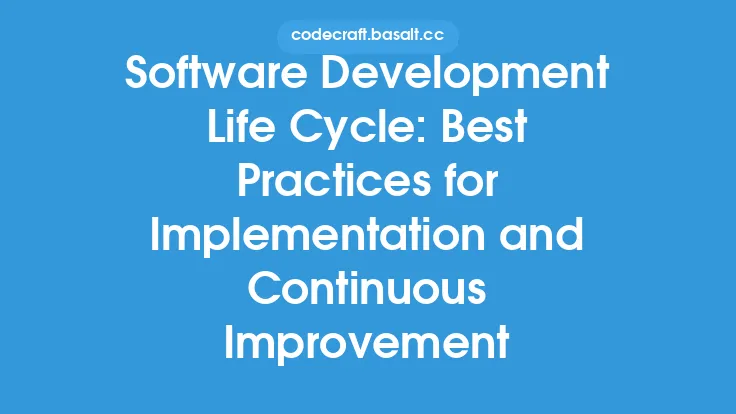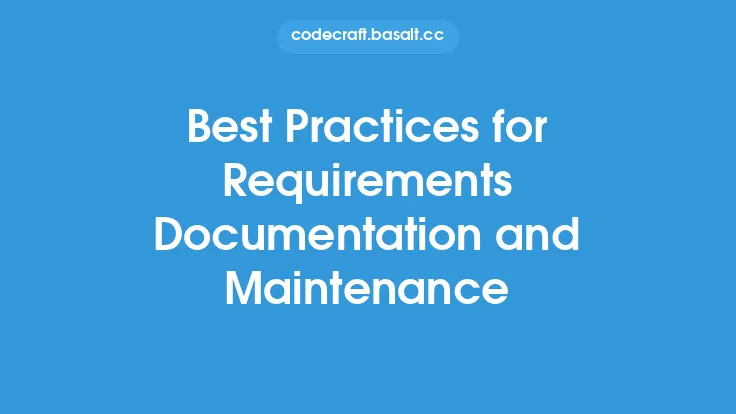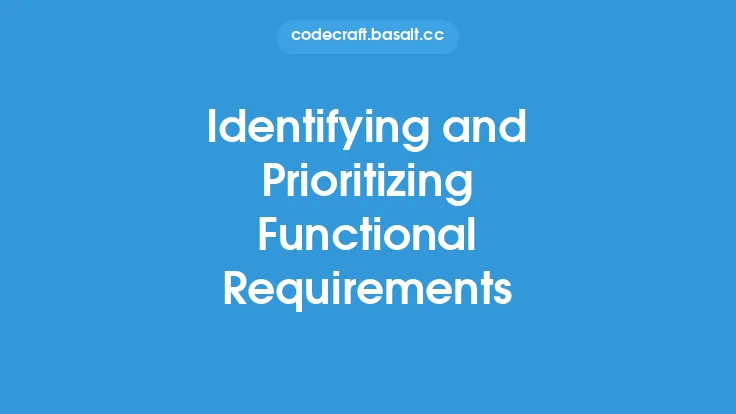When it comes to software projects, one of the most critical phases is the requirements gathering and analysis stage. This is where the foundation of the project is laid, and it is essential to get it right to ensure the success of the project. Analyzing and validating requirements is a crucial step in this phase, as it helps to ensure that the requirements are accurate, complete, and consistent. In this article, we will delve into the details of analyzing and validating requirements for software projects, exploring the various techniques, tools, and best practices that can be employed to ensure the quality of the requirements.
Introduction to Requirements Analysis
Requirements analysis is the process of examining the requirements gathered from stakeholders to ensure that they are clear, concise, and unambiguous. It involves reviewing the requirements to identify any inconsistencies, ambiguities, or gaps, and working with stakeholders to resolve these issues. The goal of requirements analysis is to produce a set of requirements that are accurate, complete, and consistent, and that can be used as the basis for the design and development of the software system.
Techniques for Analyzing Requirements
There are several techniques that can be used to analyze requirements, including:
- Requirements Review: This involves reviewing the requirements to identify any errors, inconsistencies, or ambiguities. The review can be performed by a team of reviewers, including stakeholders, developers, and testers.
- Requirements Inspection: This is a more formal review process that involves examining the requirements in detail to identify any defects or issues.
- Use Case Analysis: This involves analyzing the use cases to identify the functional requirements of the system.
- Data Flow Diagramming: This involves creating data flow diagrams to model the flow of data through the system and identify the requirements.
Validating Requirements
Validating requirements involves checking that the requirements are correct and that they meet the needs of the stakeholders. There are several techniques that can be used to validate requirements, including:
- Requirements Prototyping: This involves creating a prototype of the system to validate the requirements and identify any issues or gaps.
- Requirements Simulation: This involves simulating the behavior of the system to validate the requirements and identify any issues or gaps.
- Stakeholder Feedback: This involves obtaining feedback from stakeholders to validate the requirements and identify any issues or gaps.
- Requirements Testing: This involves testing the requirements to validate that they are correct and that they meet the needs of the stakeholders.
Tools for Analyzing and Validating Requirements
There are several tools that can be used to analyze and validate requirements, including:
- Requirements Management Tools: These tools, such as IBM Rational DOORS or HP Quality Center, provide a centralized repository for managing requirements and support features such as requirements tracking, tracing, and reporting.
- UML Tools: These tools, such as Enterprise Architect or Visual Paradigm, provide support for creating and analyzing UML models, including use case diagrams, class diagrams, and sequence diagrams.
- Data Modeling Tools: These tools, such as ERwin or PowerDesigner, provide support for creating and analyzing data models, including entity-relationship diagrams and data flow diagrams.
- Prototyping Tools: These tools, such as Axure or Adobe XD, provide support for creating prototypes of the system to validate the requirements.
Best Practices for Analyzing and Validating Requirements
There are several best practices that can be employed to ensure the quality of the requirements, including:
- Involve Stakeholders: Stakeholders should be involved throughout the requirements analysis and validation process to ensure that their needs are met.
- Use Clear and Concise Language: Requirements should be written in clear and concise language to avoid ambiguity and confusion.
- Use Standardized Templates: Standardized templates can be used to ensure that requirements are consistent and complete.
- Prioritize Requirements: Requirements should be prioritized to ensure that the most critical requirements are addressed first.
- Continuously Review and Refine: Requirements should be continuously reviewed and refined throughout the project to ensure that they remain accurate and relevant.
Challenges and Limitations
Analyzing and validating requirements can be a challenging and time-consuming process, especially for large and complex systems. Some of the challenges and limitations include:
- Stakeholder Availability: Stakeholders may not always be available to provide input and feedback, which can delay the requirements analysis and validation process.
- Requirements Volatility: Requirements can change over time, which can make it difficult to ensure that the requirements remain accurate and relevant.
- Complexity: Large and complex systems can have thousands of requirements, which can make it difficult to analyze and validate them.
- Limited Resources: Limited resources, including time, budget, and personnel, can make it difficult to perform thorough requirements analysis and validation.
Conclusion
Analyzing and validating requirements is a critical step in the software development process, as it helps to ensure that the requirements are accurate, complete, and consistent. By employing various techniques, tools, and best practices, developers can ensure the quality of the requirements and reduce the risk of errors, inconsistencies, and gaps. While there are challenges and limitations to analyzing and validating requirements, the benefits of doing so far outweigh the costs, and it is an essential step in ensuring the success of software projects.





